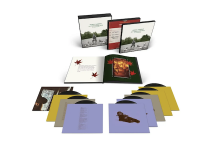Album Reviews
Sort By: Post Date TitlePublish Date
|
Sep 21, 2021
|
Sep 18, 2021
|
Sep 14, 2021
|
Sep 14, 2021
|
Sep 02, 2021
|
Aug 31, 2021
|
Aug 29, 2021
|
Aug 18, 2021
|
Aug 09, 2021
|
Jul 24, 2021















